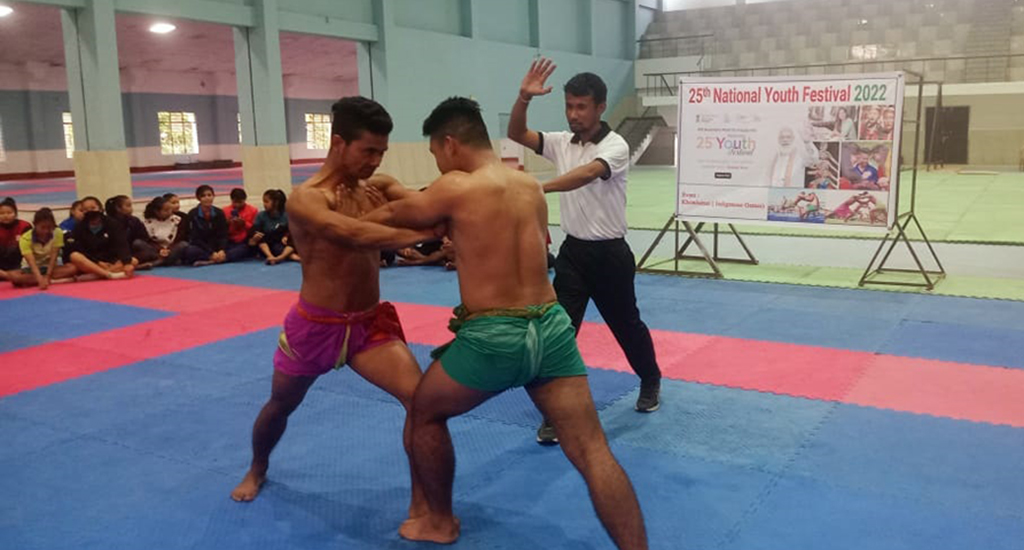
Sport unites two hostile tribes in Assam
Sport is bringing peace between two feuding tribes - the Bodos and Santhals - in a village of Assam thanks to the efforts of a young Bodo athlete.

Sport is bringing peace between two feuding tribes - the Bodos and Santhals - in a village of Assam thanks to the efforts of a young Bodo athlete.
Imagine living in a small tribal village but rushing home every day before sunset because you feared some of your own neighbours. That was the story in Simlaguri, a village in Assam’s Chirang district with just about 100 families of Bodo and Santhal tribes, most of them practising agriculture.
Though they live in the same village they avoided crossing each other’s paths.
Till khomlainai, an indigenous sport – also called Bodo wrestling – brought the Bodos and the Santhals together, thanks to the efforts of one Bodo youth who had witnessed violence at close quarters as a child.
While practising boxing and khomlainai, Mijing Narzary of Simlaguri village realised the potential of sports to change people’s lives.
“Sports is a great unifier. It doesn’t discriminate on the basis of caste, creed, economic status, family background or anything else. You could be the son or daughter of an officer or a sweeper. But when you’re in a team, you share the same team bench and play together,” said Narzary while attending a Tribal Leadership Programme at Panchgani.
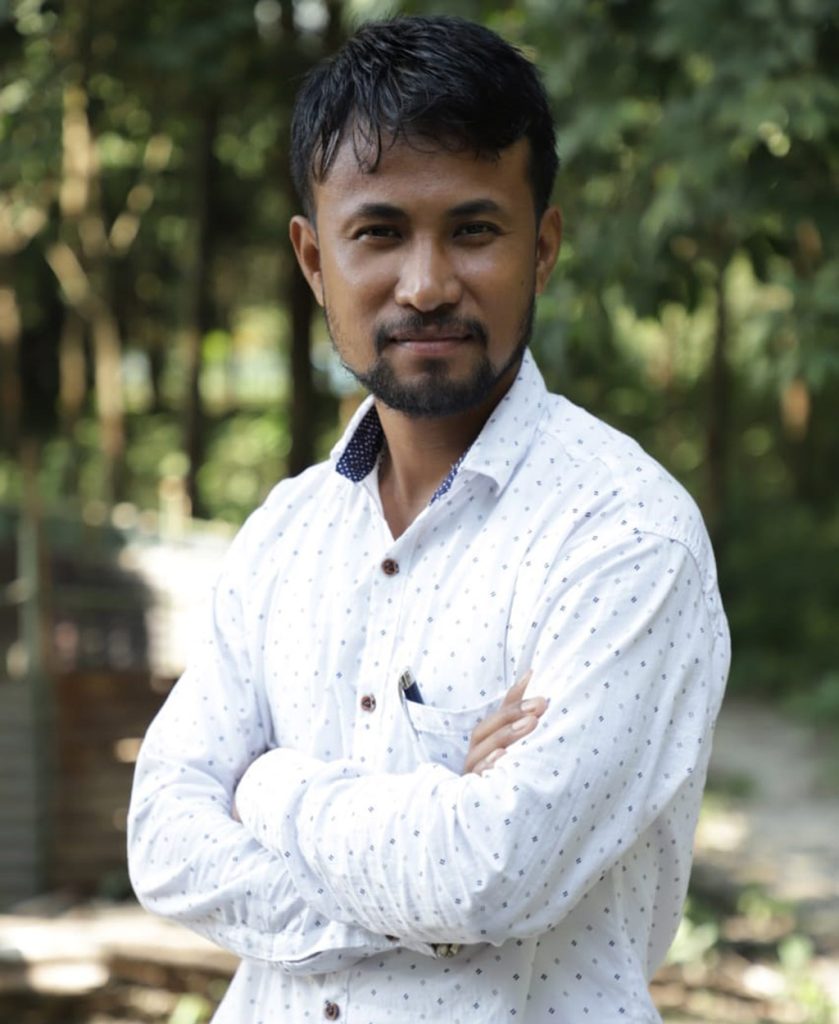
With the help of his friends he had established the Chirang Sports Centre where he was coaching Bodo children.
It soon became the ‘talk of the town’ in neighbouring villages.
But what Narzary, now 34-years-old, really wanted was his sports centre to attract youth from both tribes – to help unite them.
In 2009 Narzary met an influential Santhal leader, who supposedly had been an armed rebel when he was young, but he did not take Narzary seriously.
The Bodos also did not take to Narzary’s idea. His own family was so scared of his endeavours that he would lie about visiting the Santhals.
Sports is a great unifier. It doesn’t discriminate on the basis of caste, creed, economic status, family background or anything else.
Narzary,Tribal Leadership Programme
“Call me crazy, but I wasn’t afraid to approach the Santhals. I knew they also wanted peace and I was confident they would accept my idea,” recalled Narzary.
But that acceptance did not come easily.
Narzary visited the Santhal leader multiple times. He visited the other Santhals and shared his intentions of using sports as a unifier. After initial hesitance they extended their hospitality, inviting him for meals, which was the ice-breaker.
“Many people thought it was a useless idea. But Mijing kept saying it will eventually yield results,” recalled Kobit Narzary, a Bodo and one of the few people who supported Mijing Narzary.
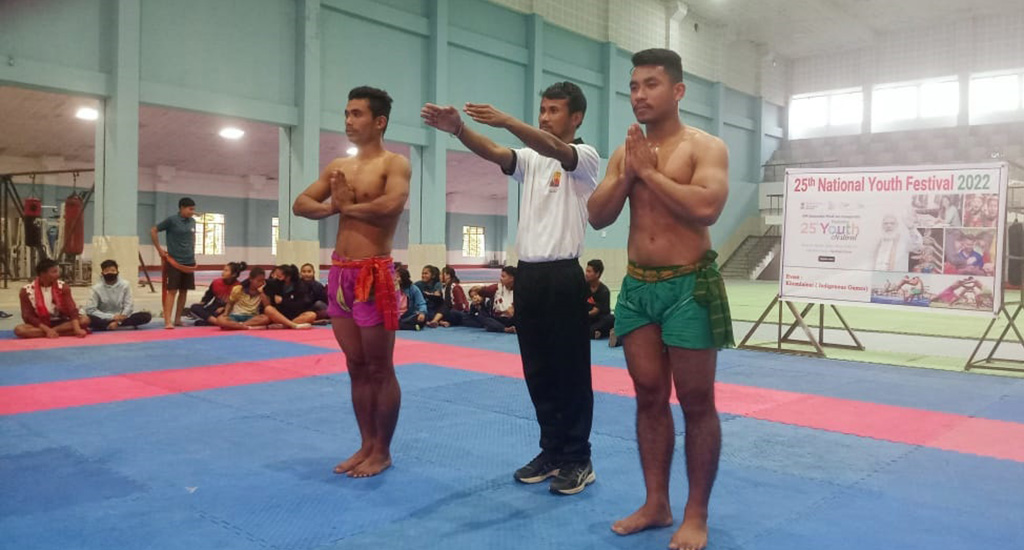
More than a month later, the Santhal leader gave in to the idea and sent his daughter for training. And slowly the others followed suit.
“It was a golden chance to change the mindset of the two communities,” Kermu Karmakar, a Santhal whose 16-year-old daughter Priya continues to train at the centre, told Village Square.
But when Narzary was that age, he had a totally different ambition.
Narzary was not always a peace broker.
As a 16-year-old, he had wanted to join a militant rebel outfit in their armed fight against the rival Santhals.
He was barely eight when he witnessed the 1996 Bodo-Santhal clashes that displaced over 250,000 people.
He recollected being at a relief camp with his parents. His elder brother was sent to a relative’s place where the condition was slightly better. Though the situation settled in 1998, there was still palpable tension and the two communities avoided each other.
With a hatred for the Santhals, the teen wanted to join the rebels.
“They were armed men in uniform with a lot of power and tricking even the police. Their stories of bravery were famous. I saw them as heroes and wanted to emulate them,” he recalled.
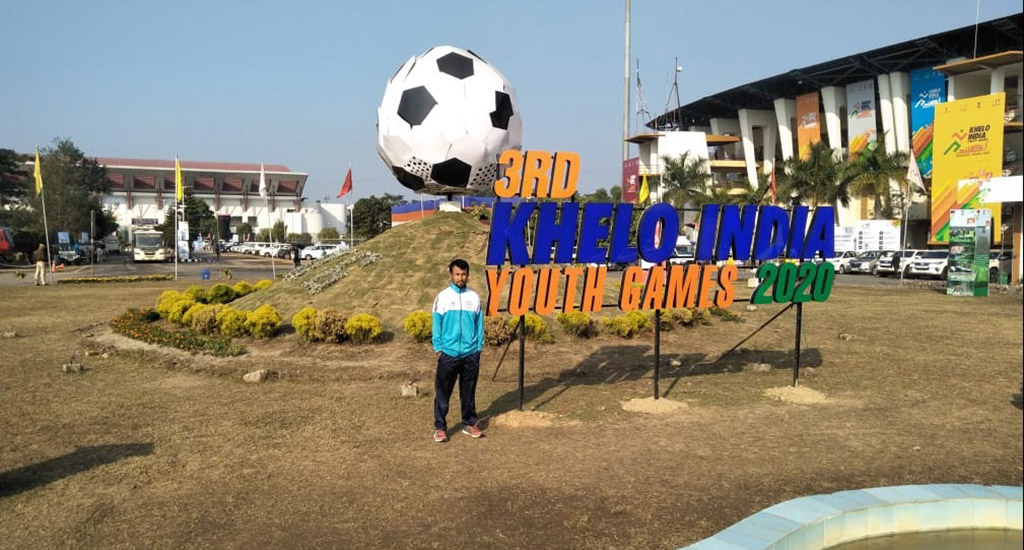
If it were not for his family’s strict warning when they learnt his intentions, he would have joined the rebels. His brother, in fact, encouraged him to join the defence forces.
“I want to be a hero,” was his only thought.
But when returning from school one day, Narzary noticed a few children getting trained in a sport which involved punches.
“I learnt from the coach Gunosankar Wary that the sport was boxing. I didn’t even know the name back then,” recalled Narzary.
Wary, a trained physical educator, was coaching the young ones in his family while searching for a job.
“I requested him to train me and he agreed.” Perhaps the ‘fighter’ tendency in Narzary prompted him to take up boxing.
That training was the beginning of Narzary’s sporting journey. Soon he won a bronze medal at the state boxing championship in 2005 in the 48kg flyweight category.
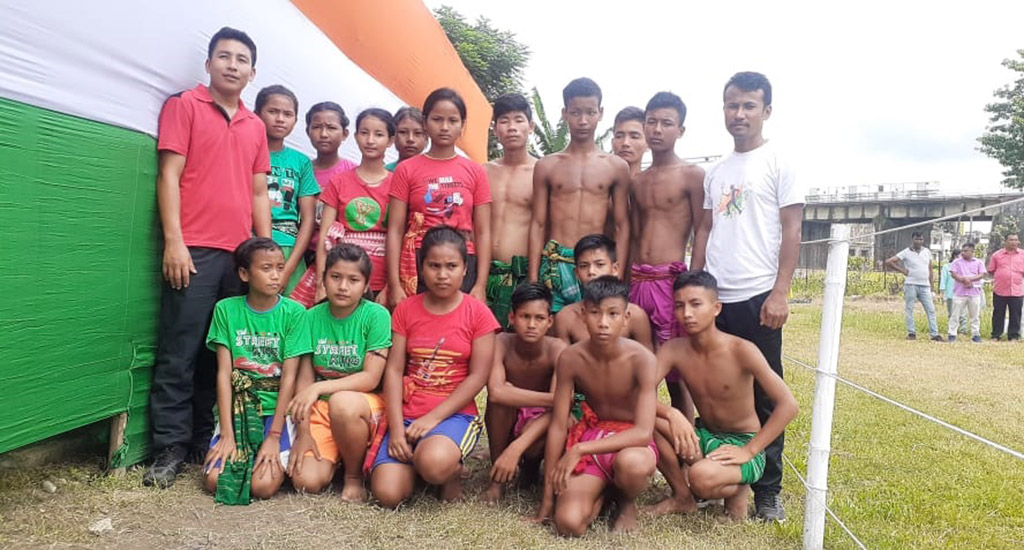
After the initial success, his coach urged him to encourage more children to join sports.
The same year they hosted the All Assam Archery Championship in their village and the All Assam Boxing Championship the next year.
Narzary, meanwhile, travelled to Guwahati to learn the nuances of khomlainai and earn a trainer’s certification. It was during this phase he felt that sports could unite the tribes.
“I wanted to fight the Santhals but ended up unifying our tribes,” he told Village Square with a sense of pride.
Earlier the tribes stayed at home to avoid conflicts.
“It always felt like the calm before the storm. There was always a fear of something wrong happening. When Mijing started the sports centre, I decided to send my daughter so that she wouldn’t have to live with fear like I did,” said Santhal villager Kermu Karmakar.
And true to Karmakar’s belief and Narzary’s conviction, things have changed now.
On the sports teams the academy ensures that it has representation from at least three religions, speakers of three different languages and has boys and girls.
A Santhal can work in Bodo farmlands and even stay with them.
“Mijing, the staff and the children have brought a change in the society,” said Kobit Narzary.
Narzary is now a khomlainai coach at the Sports Authority of India’s Kokrajhar centre. He also runs six centres in the Bodoland Territorial Council region, in association with sports organisations and funding support from donors and an NGO. The centres impart training in various sports including indigenous games, boxing, kabaddi and athletics for about 300 trainees.
On the sports teams the academy ensures that it has representation from at least three religions, speakers of three different languages and has boys and girls.
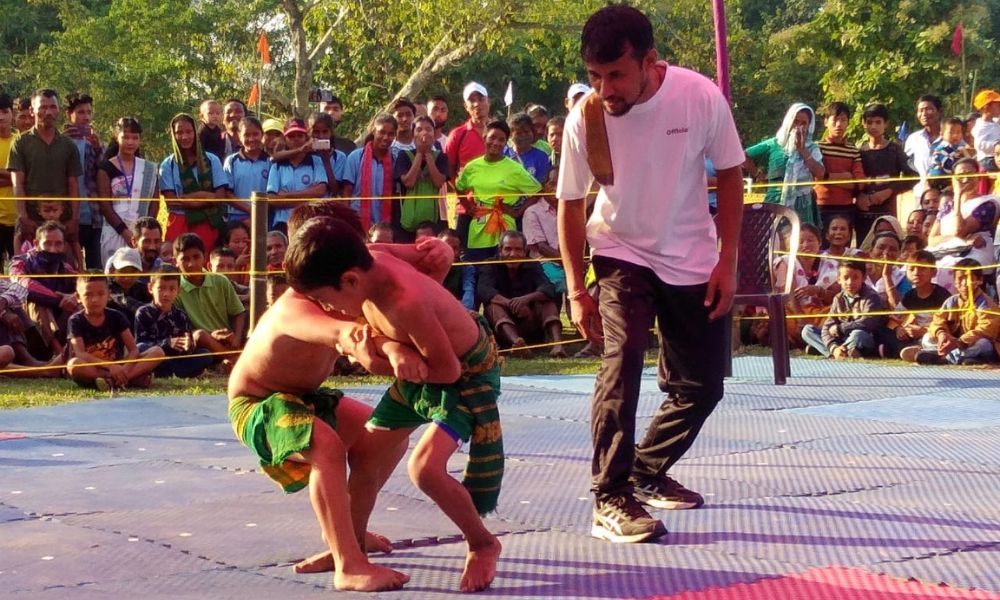
Narzary wants the younger generation to learn these sporting values.
“It’s a matter of pride for any sportsperson to represent his country. But it’s also important to learn life lessons from sports. I want the children to excel, but mostly I want them to be better human beings,” Narzary said. “I will continue this effort for as long as I can. Everyone is happy today, so am I.”
The lead image at the top of this page shows Mijing Narzary officiating a local khomlainai match (Photo courtesy Narzary)
Tazeen Qureshy is a journalist based at Bhubaneswar.